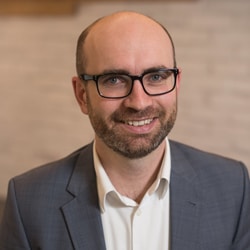
 Influencer identification has always been a key step in planning commercial and medical communications. Reputable experts who are influential in traditional activities remain centre stage; however, healthcare organisations are expanding their engagement strategies to explore the realm of digital influence. They want to know how best to optimise the use of online channels for efficiency, reach, impact and brand differentiation.
Influencer identification has always been a key step in planning commercial and medical communications. Reputable experts who are influential in traditional activities remain centre stage; however, healthcare organisations are expanding their engagement strategies to explore the realm of digital influence. They want to know how best to optimise the use of online channels for efficiency, reach, impact and brand differentiation.
The past few years have seen some impactful trends. Our industry was quick to recognise the opportunity of video content and its increased accessibility. We’ve seen multiple online ‘TV’ channels launch from medical societies and congress; some (eg ASCO) have commoditised their assets, and – for example, with Novartis’ VivindaTV.com – pharma is now competing with the traditional outlets of medical websites and publishers for curated content and healthcare professional (HCP) engagement.
We’ve also seen HCPs share information with and support each other across the globe through crowd-sourcing on closed Facebook-style and image-based social media platforms (eg SERMO and Figure 1). This idea is nothing new, but the impact that a smart UX and mobile app has created is vast – providing all doctors with the opportunity to share their opinions with the global community, to learn from feedback and to be more connected. We believe that there is more to be seen from this social collaboration in healthcare.
Many pharma companies have been apprehensive about engagement in public social media; however, we’re seeing changes, with solely online educational programmes increasingly being promoted through social media. The use of ‘TweetChats’, hashtag campaigns and blog ‘takeovers’ hosted by experts on medical websites and pharma-owned destinations, especially in relation to key congresses, is becoming more popular. Boehringer Ingelheim is a notable social media trailblazer, being one of the first to join Twitter and to successfully execute award-winning TweetChats (#ChatAfib, #COPDchat), engaging experts, patients and media. Pharma companies are now challenging the possibilities of what DOL collaboration can bring to their communications strategies.
What is the value of a DOL to pharma?
Influencer marketing is big business for many industries, and is a fast-growing area of specialism for companies selling social media analytics (eg Sysomos, Linkfluence). Social media influencers are providing a new way to combine the relevance and authenticity of brand ambassadors with targeted exposure of digital campaigns to the right audience. But are there parallels to pharma and HCP influencers?
HCP DOLs sharing content online certainly have the potential to influence the decision-making of peers and other stakeholders, particularly with regard to diagnosis and treatment. As digital and social media use by HCPs continues to increase (as verified by DRG Manhattan Research), selecting a smart mix of traditional and digital influencers to align with medical education initiatives can ensure authoritative impact for delivery and also provide online networks that will extend and increase reach.
The internet is a dynamic and fluid environment that requires constant monitoring for trends and influencers. Audience expectations are also changing – as of 2014, over 50% of HCPs have grown up with the internet (ie are digital natives), but when will the impact of digital healthcare reach its full potential? As this transformation continues at pace, pharma must keep up.
Influencer-mapping methodology matters!
There is a wide array of approaches used by companies for influencer identification. Basic approaches focus on sourcing pre-processed information that is available online (PubMed, clinicaltrials.gov, social media conversations) and packaging it up to highlight the most prominent names; however, these approaches leave room for error and don’t account for real-world nuances.
Social media should never be the sole platform focus for HCP influencer mapping; in practice, it’s often only a small piece of the puzzle when considering known HCP digital behaviours. HCPs triangulate information from multiple sources for different reasons and therefore, the potential impact of influence should be evaluated across these – some we can plan for, others are out of our control. When devising multichannel planning, insights-led approaches are crucial for developing meaningful strategies and tactics that drive change.
There are many social influencer analytics and mapping tools available that rely heavily on automated algorithms for data processing. What is key within healthcare is to consider data beyond this superficial metrics level and to analyse the content itself (by medical communications experts) with insights that extend beyond social media. This holistic overview of different data sources, combined with expert analysis, helps us to not only profile for influence, but also to really understand personalities, strengths and motivations. This detail allows for smarter recommendations and ultimately better outcomes.
The inVentiv Health influencer mapping approach is focused on relevance. Combining the best technology with healthcare analysis, we dig deep to provide our clients with informative profiles that are matched with strategic goals.
Mike Collinson is director of digital strategy and Madeline Rounds is a digital consultant, both at inVentiv Health Medical Communications.





